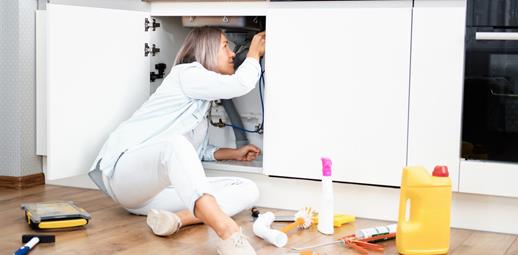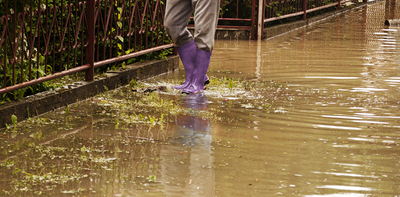
If you’re faced with a leak at home, whether it’s a burst pipe or a leaking washing machine, it’s easy to panic, but once you’ve managed to stop the leak, or reduce it with a temporary fix, it’s important to get it fixed as soon as possible.
Here are some useful tips on what to do if you find a leak.
How to spot a leak
Some leaks are obvious. If you have a dripping tap, shower or leaky toilet, then it’s best to have it fixed promptly and by a plumber, as even small trickles of water can lead to bigger issues in the longer term. So best to get any problems addressed to avoid any chances of a more significant escape of water.
Other leaks may be harder to spot. For example, you could have a leaking pipe that is causing unseen damage.
Look out for the following signs of a leak:
- Lower water pressure from your taps, such as when you’re filling a bath
- Waterlogged areas in your garden
- Wet patches on ceilings or walls
- Noisy pipework
Did you know you can also use your water meter to check for leaks? First, ensure nothing is using any water in your home. Then turn your ‘stop’ tap off and note the reading. One or two hours later check again to see if the meter reading has changed. If it has, there may be a leak somewhere, in which case contact a plumber to help.
Frozen pipes
Cold weather can take its toll on your home, and when temperatures drop below zero frozen pipes are a common issue that many homes are at risk of. When water freezes it expands, which can cause pipes to burst and flood your home.
British Gas[1] suggests the following are warning signs of a frozen pipe:
- Your central heating makes gurgling sounds when it’s on
- Your boiler won’t turn on
- There’s no water coming out of your taps, or there’s just a trickle
- Your sink is clogged and your toilet is flushing slowly
Thankfully, if you think you’ve got a frozen pipe, there are some easy ways you can keep it from bursting.
First you’ll need to find out which pipe is frozen. Any outdoor pipe can be at risk during icy weather, as well as those that pass through any cold spots in the house, like the loft.
If you have a modern condensing boiler, then British Gas suggests its condensate pipe - a plastic one that comes out of your boiler – is most likely to be the guilty culprit. See where it goes outside and check if it’s frozen.
How to thaw frozen pipes
To thaw frozen pipes, you first need to turn off your ‘stop’ tap, also known as an isolation valve or stopcock. Turning the valve clockwise will close it, but it may take a few minutes for the water to stop altogether.
You can then use a hairdryer on its lowest setting to defrost the pipe. If you don’t have a hairdryer, try hot water bottles or towels soaked in warm water. The key is to be patient and thaw the pipe slowly. Direct heat may cause permanent damage or could even lead to a fire.
Also, turn on nearby cold taps (keep the ‘stop’ tap is still turned off) as this will relieve pressure on the frozen pipe.
Dealing with a burst pipe
If a pipe does burst, then take the following steps:
- Turn off the ‘stop’ tap and boiler
- Open all taps to drain the system quickly (put plugs in sinks and your bath to give you a temporary supply while you wait for help, but make sure they don’t overflow)
- Use towels to soak up or block off any escaping water
- If water has leaked near any electronics, then it’s best to switch them off at the mains
- Call a plumber
If you need to make an insurance claim, then contact your insurer as soon as practical and they will give you advice on how to proceed.
To find out more about how to protect your home and belongings, go to Solved.
[1] https://www.britishgas.co.uk/the-source/beat-the-weather/frozen-or-burst-pipes.html

